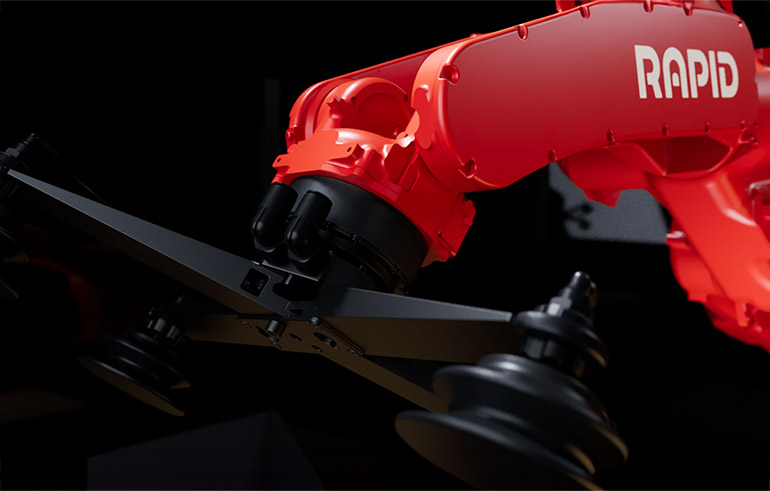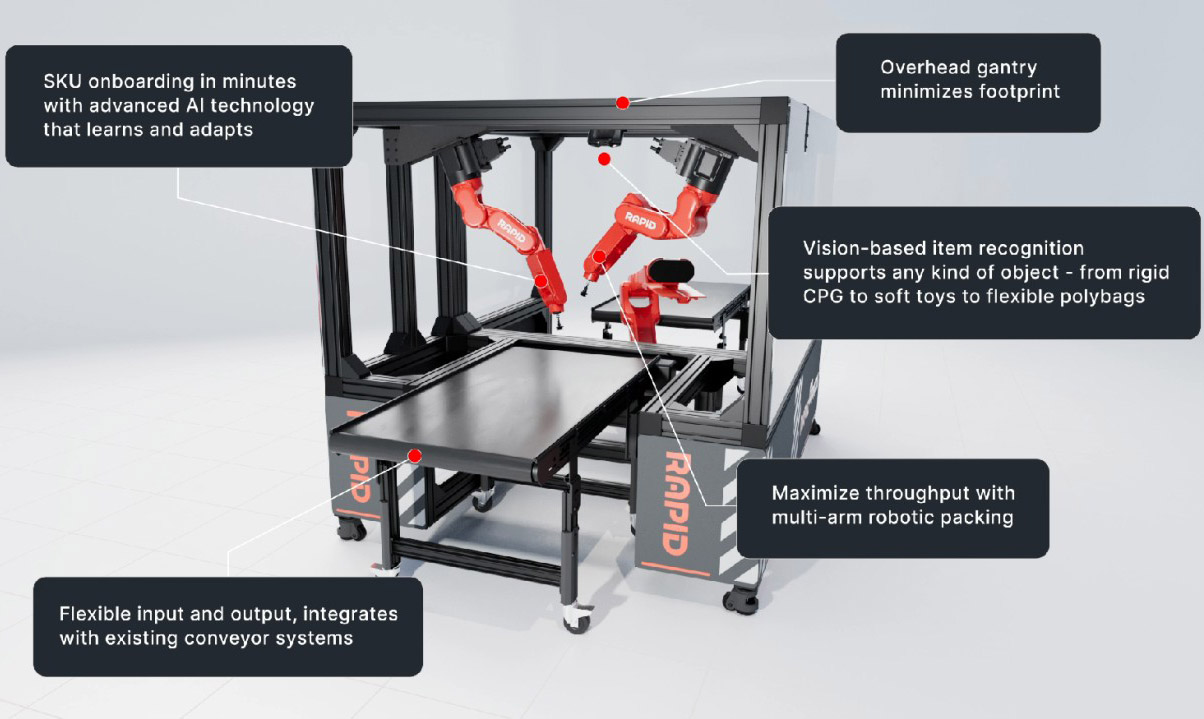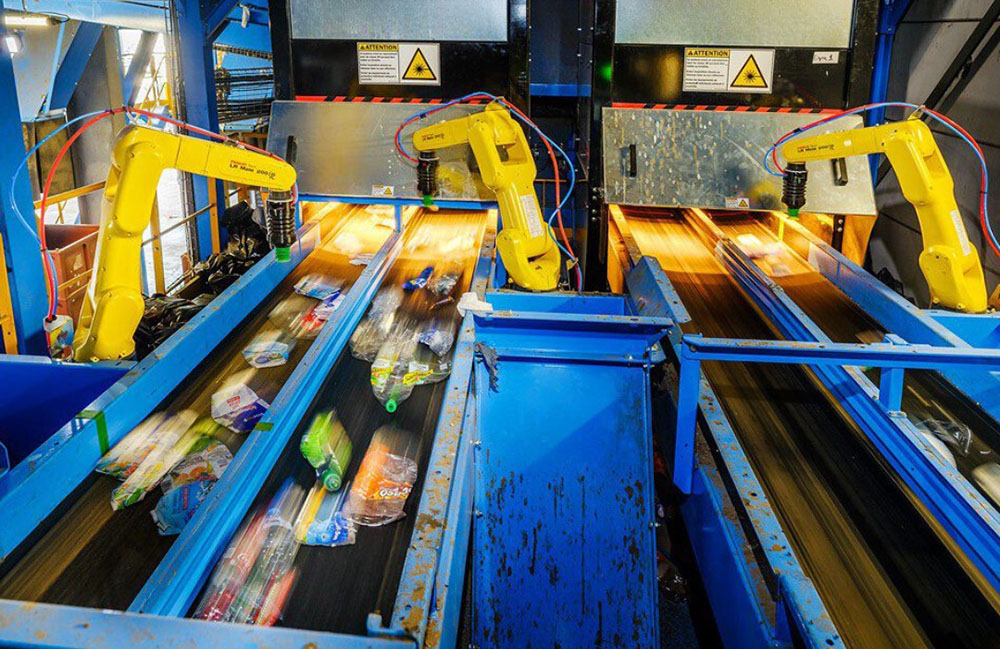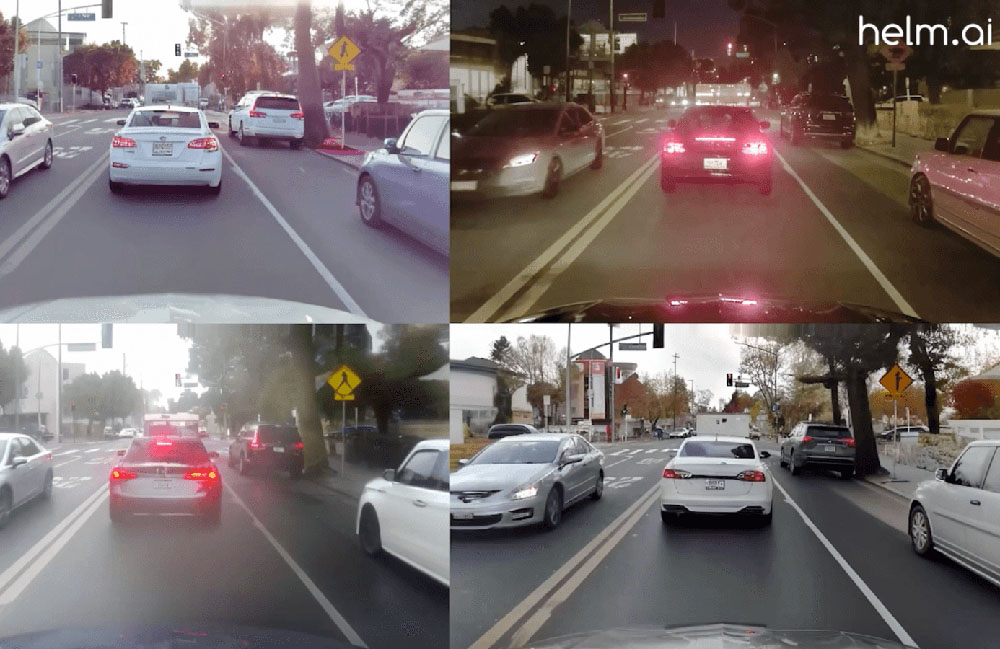
Rapid iD uses 3D vision and generative AI to quickly identify new objects. Source: Rapid Robotics
Many companies are racing to apply the latest advances in artificial intelligence to robotics. Rapid Robotics this year announced Rapid iD, which it said uses generative AI, computer vision, and machine learning to enable robot arms to pick, inspect, and place items “with 100% certainty in end-of-line and logistics scenarios.”
Last month, the San Francisco-based company promoted Kimberly Losey from chief growth officer to CEO, as founder Jordan Kretchmer moved into the executive chairman role.
“We founded Rapid Robotics in 2019, with a vision of solving the labor shortage and reinvigorating the American supply chain by providing adaptive and scalable automation solutions in record time and at record low costs,” stated Kretchmer at the time.
“Kim shares my passion for building long-lasting partnerships with our customers, and for developing generative AI-driven solutions that deliver concrete value,” he added. “Today, Rapid is built on this inimitable foundation of adaptive cutting-edge technology, real-world experience deploying hundreds of robots and a genuine commitment to our partners.”
Losey brings diverse experience
Prior to being chief growth officer and chief marketing officer at Rapid Robotics, Losey was director of global brand marketing and development at Hasbro. She was also head of marketing at Modio, an entrepreneur at mod mogul, and head of marketing at Autodesk.

Kimberly Losey, CEO of Rapid Robotics. Source: LinkedIn
“I first went to school for design, actually, and then realized that what I really love is running a business,” she told The Robot Report. “It’s really exciting right now in robotics with the growth of AI.”
“In the apparel and toy industries, I learned way more about manufacturing than I ever thought would be possible,” recalled Losey. “I helped reinvigorate some brands like Monopoly and Transformers, before the movies came out. Figuring out tooling appropriations to make enough Optimus Primes for the holiday season could be where my love of robotics began.”
At Modio, which was acquired by Autodesk, Losey shifted to 3D printing and design. She also championed a project involving a welding work cell with two robot arms in a shipping container.
“Understanding both the digital and the physical of the technical side and the business side, I’m able to bring all of these different perspectives to what we do at Rapid Robotics,” Losey said. “In 2022, I joined the company, which was trying to help solve the labor crisis and disrupt the way industry has traditionally deployed robotics. The process takes so long and has been convoluted and lacked transparency.”
Rapid Robotics makes a journey from RaaS
Among the challenges facing startups is the need to scale as they grow their customer base. This is particularly true with the robotics-as-a-service (RaaS) model, where the supplier is responsible for managing and maintaining machines.
“As our customers got bigger and bigger, the challenge was that we didn’t,” said Losey. “The technology that we had wasn’t mature enough to solve their problems fast.”
“We took a few steps back to reset and looked at what I’ve been calling the ‘robotic hierarchy of needs,'” she explained. “The foundational layer is really about perception and manipulation. That has prevented so many consumer packaged goods [CPG] companies from adopting robotics.”
“Applications are getting more complex in manufacturing and across the supply chain, so we need robots that are able to adapt almost like humans can adapt,” Losey said. “Thinking back to the toy industry, kids are brilliant in many ways, but they can’t always tell you what they want. Understanding what they’re not saying is where the biggest insights come from, and that’s like identifying what the customer needs.”
Rapid Robotics learned that its customers wanted adaptive robots that can work quickly in tasks that humans don’t find rewarding, she said. It shifted its focus from RaaS to Rapid iD as a product that “marries robotic performance with human instinct,” according to Losey.
Rapid iD quickly learns objects to manipulate
The Rapid iD Engine uses 3D image capture and generative AI to learn new objects, and it can adapt to them in under two minutes, said Rapid Robotics. This enables optimized grasping and precision for pick-and-place operations, claimed the company.
“Simplicity is better than complexity,” said Losey. “We’re not just throwing AI at the problem, and we’re staying on top of emerging trends. Computer vision is way better than it was even 18 months ago. We’re building our technology to use all of these emerging AI models, and we do it specifically to be able to better perceive and manipulate objects.”
Rapid Robotics has applied Rapid iD to piece picking, packing, palletizing and depalletizing, and dynamic kitting. For example, a subscription box could contain objects of wildly different sizes and rigidity in too many combinations for traditional approaches to work, said Losey.
“Generative AI gives us a sort of superpower that we can transfer to the robots,” she said. “At the same time, we need more contextualized data sets. I was talking with someone the other day, and his perspective was, ‘Look, I don’t need my robot to drive from A to B and thread a needle and wash the windows.'”
While many other companies are working on making robots smarter with generative AI, Losey said she was confident that Rapid Robotics has the right focus.
“There’s a big market opportunity, but we’re not trying to re-create the wheel, whether it’s the motion stack for robots or large language models,” she said. “Not everything has to be proprietary, and we’re taking an ensemble approach to identifying and grasping objects.”
Another differentiator is that Rapid iD is already on the market, said Losey.
“We have dozens and dozens of customers that range from small contract manufacturers to Fortune 100 and Top 10 global companies, and they need these problems solved today,” she asserted. “We also look at the five-year horizon and are thinking about it in terms of the valuation we want, but more importantly, the problems we’re solving for customers.”

Rapid Robotics says Rapid iD enables a packing work cell to handle everything from rigid boxes to flexible polybags. Source: Rapid Robotics
Smarter robots easier to use than point or general solutions
Rapid Robotics still offers a RaaS option, as well as CapEx (capital expenditure) pricing. The company‘s customers want to be experts in logistics, not in advanced robotics, Losey noted. Ease of use is important to Rapid Robotics, she added.
“They don’t have the resources to automate, and even the systems integrators are so backed up right now,” said Losey. “How can we get robots to be as easy as buying a workbench from the hardware store? They need to be as seamless and foolproof as a 3D printer.”
“We have these key priority partnerships with our current customer base to deploy solutions like Rapid iD for kitting or packing, and from that we know that the perception layer and the application layer are starting to blur a little bit,” she said. “Foundation models will emerge from that, which gives us a great opportunity to delivery what the market wants, not a totally generalized application.”
“We need the level of intelligence to be able to keep up with changes and modern requirements of the logistics space,” Losey said. “We’ve got this core around picking and placing objects, and then we looked at related tasks, like putting stuff in a box, and palletizing that box. It forces us to have a platform mentality, not a point-solution mentality.”
Rapid Robotics has demonstrated the ability to detect stuffed animals on a conveyor belt and place them at a rate of 800 units per hour. This has potential for e-commerce, recycling, and product returns, said Losey.

 4 months ago
41
4 months ago
41








 English (US) ·
English (US) ·